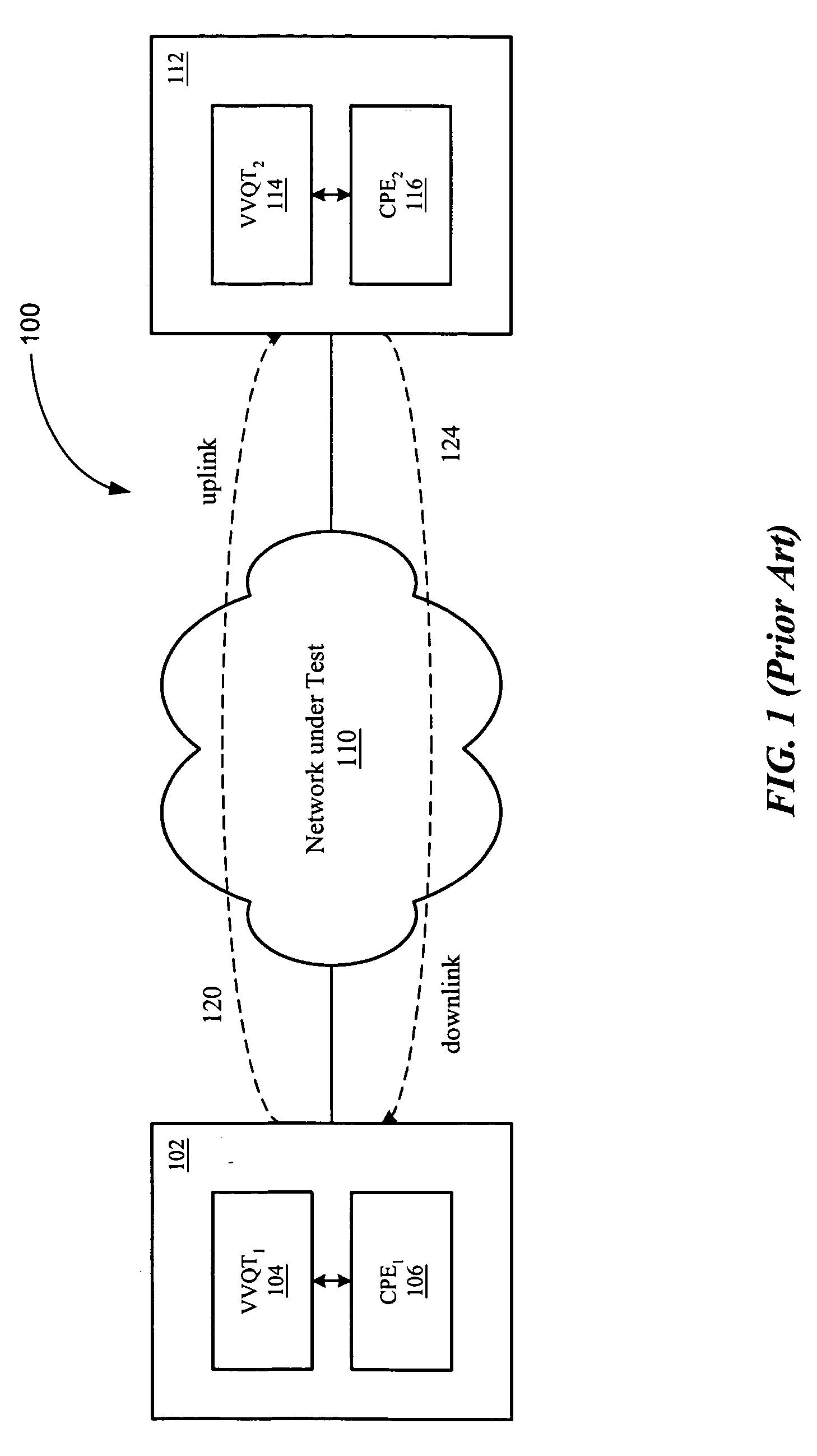Bi-directional continuous voice and video quality testing system with TTMF tones
a continuous voice and video quality and tones technology, applied in the field of telecommunication systems, can solve the problems of increasing the complexity of maintaining high levels of voice and video quality, causing additional problems, packet loss, noise, signal attenuation,
- Summary
- Abstract
- Description
- Claims
- Application Information
AI Technical Summary
Benefits of technology
Problems solved by technology
Method used
Image
Examples
Embodiment Construction
[0041] In the following description of the preferred embodiment, reference is made to the accompanying drawings that form a part hereof, and which show, by way of illustration, a specific embodiment in which the invention may be practiced. Other embodiments may be utilized and structural changes may be made without departing from the scope of the present invention.
[0042]FIG. 3 is a signal flow diagram of an example implementation of the synchronization process in a CFPR-VVQT system. This synchronization process may utilize a Triple Tone Modulation Frequency (“TTMF”) tone to generate start and end flag signals (known as S-TTMF and E-TTMF signals, respectively) to signal the start and the end, respectively, of the playing and recording of a test sample. Dual Tone Modulation (or Multiple) Frequency (“DTMF”) tones or signals are well known in telecommunications. The signal generated by a DTMF encoder is a direct algebraic summation, in real time, of the amplitudes of two sine (cosine) ...
PUM
 Login to View More
Login to View More Abstract
Description
Claims
Application Information
 Login to View More
Login to View More - R&D
- Intellectual Property
- Life Sciences
- Materials
- Tech Scout
- Unparalleled Data Quality
- Higher Quality Content
- 60% Fewer Hallucinations
Browse by: Latest US Patents, China's latest patents, Technical Efficacy Thesaurus, Application Domain, Technology Topic, Popular Technical Reports.
© 2025 PatSnap. All rights reserved.Legal|Privacy policy|Modern Slavery Act Transparency Statement|Sitemap|About US| Contact US: help@patsnap.com



